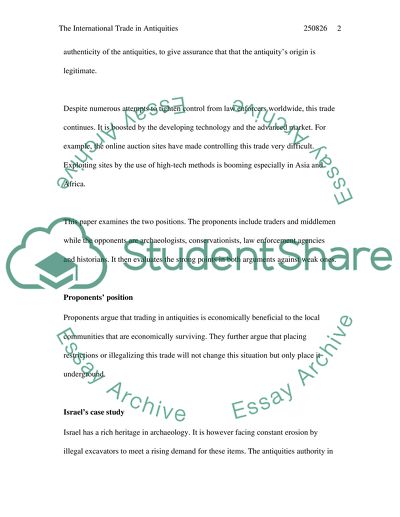Cite this document
(The International Trade in Antiquities Essay Example | Topics and Well Written Essays - 1500 words, n.d.)
The International Trade in Antiquities Essay Example | Topics and Well Written Essays - 1500 words. https://studentshare.org/archaeology/1516429-the-international-trade-in-antiquities
The International Trade in Antiquities Essay Example | Topics and Well Written Essays - 1500 words. https://studentshare.org/archaeology/1516429-the-international-trade-in-antiquities
(The International Trade in Antiquities Essay Example | Topics and Well Written Essays - 1500 Words)
The International Trade in Antiquities Essay Example | Topics and Well Written Essays - 1500 Words. https://studentshare.org/archaeology/1516429-the-international-trade-in-antiquities.
The International Trade in Antiquities Essay Example | Topics and Well Written Essays - 1500 Words. https://studentshare.org/archaeology/1516429-the-international-trade-in-antiquities.
“The International Trade in Antiquities Essay Example | Topics and Well Written Essays - 1500 Words”. https://studentshare.org/archaeology/1516429-the-international-trade-in-antiquities.


